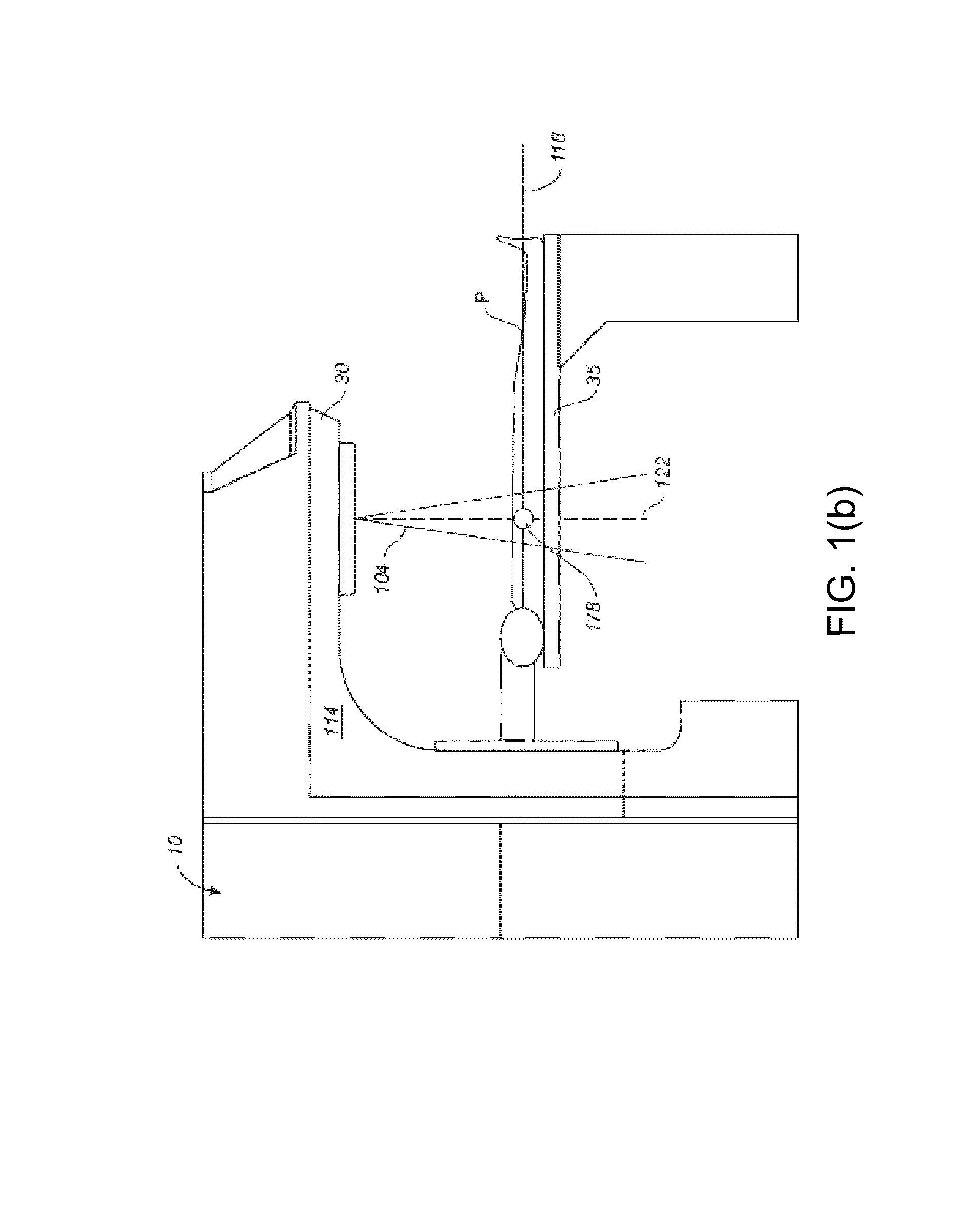Dose calculation method for multiple fields
a calculation method and multiple field technology, applied in radiation therapy, therapy, electrical equipment, etc., can solve the problems of requiring substantial computational time for algorithms for calculating and optimizing treatment plans, and increasing the difficulty of preparing treatment plans
- Summary
- Abstract
- Description
- Claims
- Application Information
AI Technical Summary
Benefits of technology
Problems solved by technology
Method used
Image
Examples
Embodiment Construction
[0018]FIGS. 1(a) and 1(b) depict a radiation therapy system of the type which may be used in connection with the present invention. Referring to FIG. 1(a), a perspective view of radiation therapy system (in this case a linear accelerator) is shown. Typically, such a system is capable of generating either an electron (particle) beam or an x-ray (photon) beam for use in the radiotherapy treatment of patients on a treatment table 35. Other radiation therapy systems are capable of generating heavy particles such as protons. For purposes of the present discussion, only x-ray irradiation will be discussed. However, it will be appreciated by those skilled in the art that the same principles apply to other forms of irradiation.
[0019]Stand 10 supports a rotatable gantry 20 with a treatment head 30. A control unit (not shown) which includes operational electronics for controlling the system is coupled to stand 10. A high voltage source is provided within the stand or in the gantry, to supply ...
PUM
 Login to View More
Login to View More Abstract
Description
Claims
Application Information
 Login to View More
Login to View More - R&D
- Intellectual Property
- Life Sciences
- Materials
- Tech Scout
- Unparalleled Data Quality
- Higher Quality Content
- 60% Fewer Hallucinations
Browse by: Latest US Patents, China's latest patents, Technical Efficacy Thesaurus, Application Domain, Technology Topic, Popular Technical Reports.
© 2025 PatSnap. All rights reserved.Legal|Privacy policy|Modern Slavery Act Transparency Statement|Sitemap|About US| Contact US: help@patsnap.com



